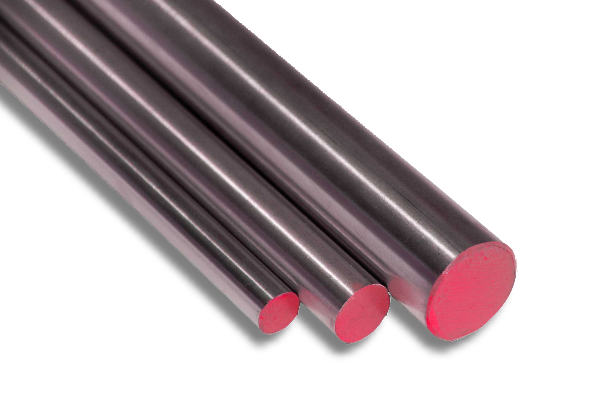The mechanical property parameters of H13 (4Cr5MoSiV1) steel include toughness (impact toughness and fracture toughness), tensile properties (room temperature tensile properties and high temperature tensile properties), and hardness. The following is the mechanical property data of H13 (4Cr5MoSiV1) steel compiled and edited by Suzhou Dongqi.
H13 (4Cr5MoSiV1) steel is an air-cooled hardened hot work die steel and is one of the widely used steel grades among all hot work die steels. H13 steel is widely used in the manufacture of hot extrusion molds and core rods, forging dies for forging hammers, forging press molds, die inserts for precision forging machines, and die-casting molds for aluminum, copper, and their alloys. The H13 series steel grades include: SWPH13 (Baosteel Special Steel Branch, formerly Shanggang Fifth Factory), DT413 (Fushun Special Steel), etc
The toughness of H13 (4Cr5MoSiV1) steel:
The impact toughness and fracture toughness of H13 steel are both high. The fracture toughness values measured according to JB 947-1978 standard and the impact toughness values measured using Charpy U-notch specimens are listed in the following table. The α k and KIC values both have valleys during tempering at 500 ℃, corresponding to the peak of secondary hardening after tempering. The α k and KIC values of H13 steel are higher than those of traditional 3Cr2W8V steel.
| Quenching temperature/℃ | Tempering temperature/℃ | Impact toughness α k (J/cm2) (Charpy U-shaped notch) | Fracture toughness KIC/(MPa • m1/2) |
| 1000 | 550 | 28 | 32.3 |
| 600 | 45 | 97.0(KQ) | |
| 1050 | 550 | 26 | 26.9 |
| 600 | 37 | 70 | |
| 1100 | 550 | 14 | 29.4 |
| 600 | 32 | 101(KQ) |
Tensile properties of H13 (4Cr5MoSiV1) steel:
⑴ Room temperature tensile performance:
The room temperature tensile properties of H13 steel after different heat treatment processes are listed in the table below.
| Quenching temperature/℃ | Tempering temperature/℃ | Yield strength σ s/MPa | Tensile strength σ b/MPa | Shrinkage rate of cross-section (psi/%) | Elongation rate δ/% |
| 1000 | 550 | 1240 | 1490 | 47.7 | 8.2 |
| 600 | 958 | 1100 | 60.2 | 11.8 | |
| 1050 | 550 | 1650 | 1830 | 46.5 | 7.2 |
| 600 | 1220 | 1380 | 51.1 | 8.8 | |
| 1100 | 550 | 1730 | 1970 | 47 | 8.9 |
| 600 | 1110 | 1290 | 52 | 10.5 |
⑵ High temperature tensile performance:
H13 steel is heated at 1040 ℃, quenched in oil, tempered once at 600 ℃, and then tempered again at 580 ℃. The high-temperature tensile properties of the samples that are insulated for 1 hour each time are shown in the table below.
| Test temperature/℃ | Tensile strength σ b/MPa | Yield strength σ s/MPa | Elongation rate δ/% | Shrinkage rate of cross-section (psi/%) |
| 550 | 1058 | 902 | 6.5 | 51 |
| 600 | 1147 | 960 | 6.5 | 51 |
| 650 | 1078 | 980 | 7 | 52 |
| 700 | 500 | 451 | 11 | 80 |
Hardness of H13 (4Cr5MoSiV1) steel:
The hardness of H13 steel quenched by air cooling is generally lower than that of oil cooled quenched workpieces heated at the same temperature. During tempering, as the tempering temperature increases, the hardness first decreases and then increases. In the temperature range of 500 ℃~550 ℃, M7C3 type carbides diffuse and precipitate, and residual austenite transforms, resulting in a tempering secondary hardening peak, as shown in the following figure (Figure a shows the oil cooled quenched sample; Figure b shows the air cooled quenched sample). The peak value of the hardening peak of the oil cooled quenched sample is lower than the hardness after quenching; The tempering hardening peak of the air-cooled quenched sample is higher than the hardness value after quenching, which is due to the presence of more residual austenite in the air-cooled quenched sample. Samples heated below 1000 ℃ and quenched by oil cooling do not show obvious hardening peaks during tempering, while samples quenched by air cooling still exhibit secondary hardening peaks. However, the hardness of the oil cooled quenched sample after tempering is still higher than that of the air cooled quenched sample.
Hardness changes of H13 mold steel after heating, quenching and tempering at 1080 ℃
Overall, H13 (4Cr5MoSiV1) steel has sufficient thermal strength and high toughness when serving below 600 ℃, making it a better steel grade to replace 3Cr2W8V steel in the medium temperature range due to its good thermal fatigue resistance. Due to the good thermal fatigue resistance of H13 steel, repeated cooling with coolant can be used to suppress the temperature rise of the mold. H13 (4Cr5MoSiV1) steel has gradually replaced 3Cr2W8V steel in die-casting molds.




